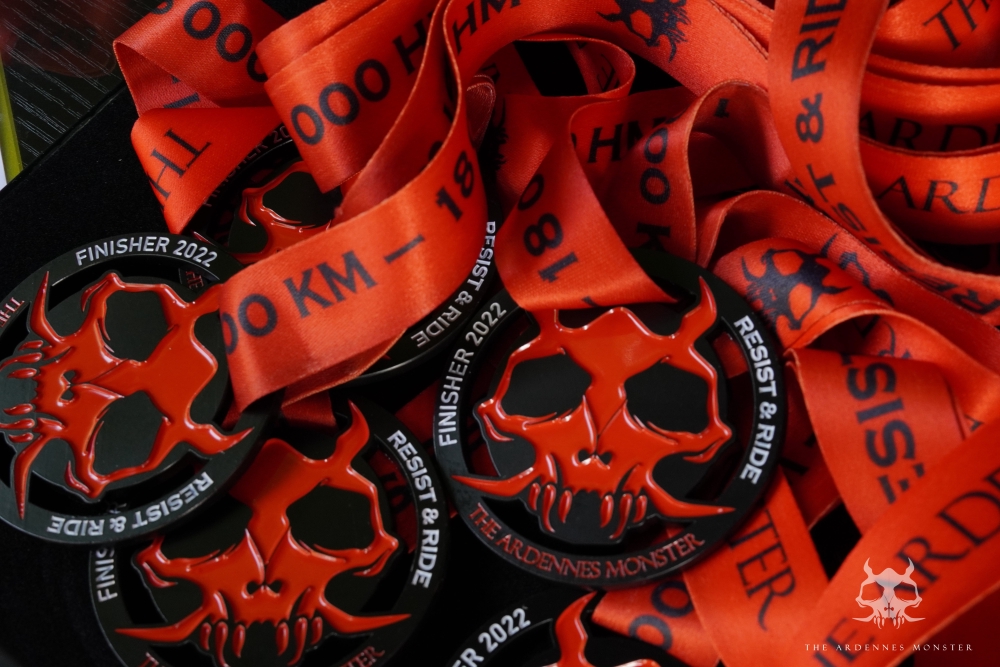Race Report: The Ardennes Monster 2022
After finishing the Race around the Netherlands, probably Europe’s flattest ultra race in Europe, I wanted to try something different: what’s probably Europe’s steepest ultra race, the first edition of The Ardennes Monster.
The course was definitely designed to make you suffer. It includes iconic climbs from Belgium’s classic races such as the Liège-Bastogne-Liège and La Flèche Wallonne, like the Mur de Huy, the Stockeu and the Côte de la Redoute, which by themselves are quite challenging during a 1.000km race. But it also includes lesser known, but much harder climbs, like the Montagne de la Croix, the Côte des Sept Meuses and the Triple Mur de Monty, totalling 100 listed climbs, and a few surprise ones here and there.
The Bike
I’m again riding my 3T Strada, with almost the same setup as the Race around the Netherlands, with only a few modifications.
The most important of all, since the course is so hilly, is a 10-44T cassette to replace the 10-33T I’ve been riding since I got the bike. With the 44T chainring, I have a 1:1 gear ratio, which I was hoping to be enough for anything below 20% gradient. The stock SRAM Force AXS derailleur I have is not compatible with such a large cassette, so I also modified it with the Garbaruk derailleur cage, which is designed to extend the range up to 50T. It also has oversized pulley wheels, and I’ll always take the free extra watt if I can.
For some more extra free watts, I also removed a couple of spacers from my aerobars, so I can get my position slightly lower. I’ve been training with this setup for a bit, and besides some discomfort during the very first ride, now I’m used to it, and doesn’t seem to have any negative effect.
Last but not least, I replaced the Restrap top tube bag with Apidura’s Racing Top Tube Pack. The Restrap’s zipper would get stuck open very often and I’d need to slow down or sometimes even stop to get it to close properly. Apidura’s has a magnetic closure, so that solved that particular problem.
The Plan
My original plan was to try to finish the course in about 60 hours, trying to get as close as possible to the minimum allowed rest time. The race requires a move ratio of at most 0.875, so that would leave me with 7:30 hours to rest, sleep, and refuel.
Unfortunately, Reality had different plans, as is often the case. I had been suffering from pain in my right knee ever since I went back to training after the Race around the Netherlands, and no amount of stretching and strengthening seemed to help. A night ride to Côte de la Redoute two weeks before the race also showed that the chillier temperatures made the pain so much worse, and reminded me that my FTP is not where it used to be a year ago anymore.
A more reasonable person would’ve probably reconsidered the decision to race at all, but while the body was not at its best, the mind really wanted to get this done. I doubled down on the stretching and strengthening for the week and half I had left, estimated that 70 hours would probably be more realistic, put on two knee warmers on top of each other, and rolled up to the start.
Citadelle de Namur to Le Coffee Ride: The Death Sentence
All I ever ask for, of any race, is a dry start. Starting a very long ride under the rain doesn’t exactly set a very encouraging mood. But this time around it wasn’t meant to be: the forecast predicted some light rain for a few hours, starting exactly at 20:00, when the race started.

Just before the start, smiling through the pain of knowing this is gonna be one wet ride
The race organization lined us up, handed us our trackers, and played some encouraging music. Olivier also gave us more words of encouragement, but at this point I was just ready to start riding.
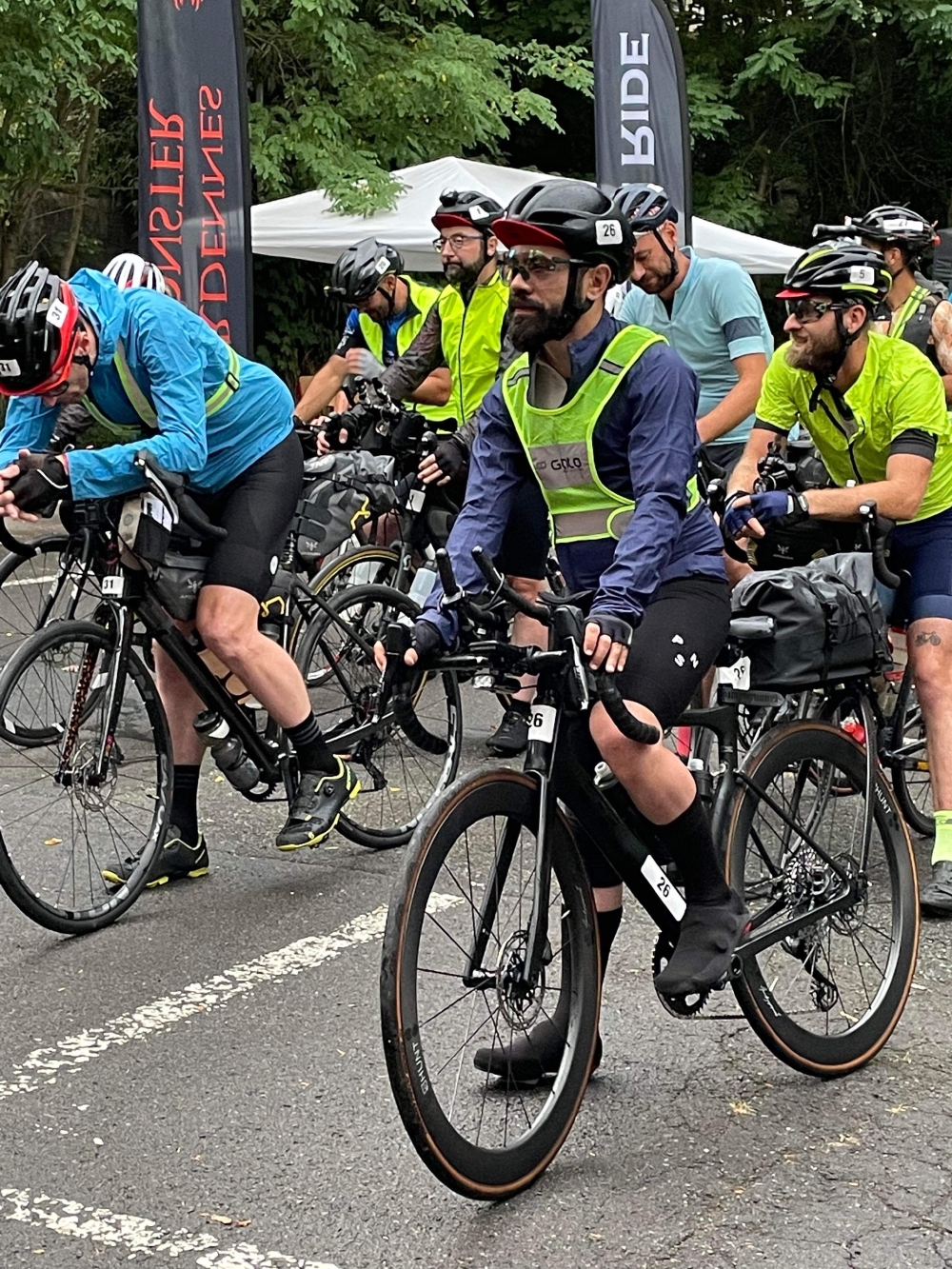
Ready to start racing!
The start was neutralized until after the descent from the Citadelle de Namur, with the organization car pacing the peloton and taking pictures. With the wet roads, I probably had the loudest disc brakes in the peloton (one of the riders, smugly riding his silent rim brakes, looked at me and said “gotta love disc brakes”). After a little bit of traffic, the real race started at the foot of the first climb, with a cool 9.4% average gradient, and a 16% max. It was a good warmup, but even with my best 5-minute power ever, most of the front group sped away, most never to be seen again.

First climb
The first two hours were wet but otherwise uneventful. I got a bit bothered by being passed by a few more riders, but I kept my pace steady and tried to keep the spirits high, despite the knee starting to feel a little bit.
The spirits finally hit the lowest point at the Mur de Huy. This was the first real climb, brutally steep, it had just gotten dark, and my knee was now on fire. I didn’t want to give up right then and there, but I really felt like I was not gonna be able to finish the race with so much pain. I decided to defer the decision to scratch until the arrival at the first checkpoint.
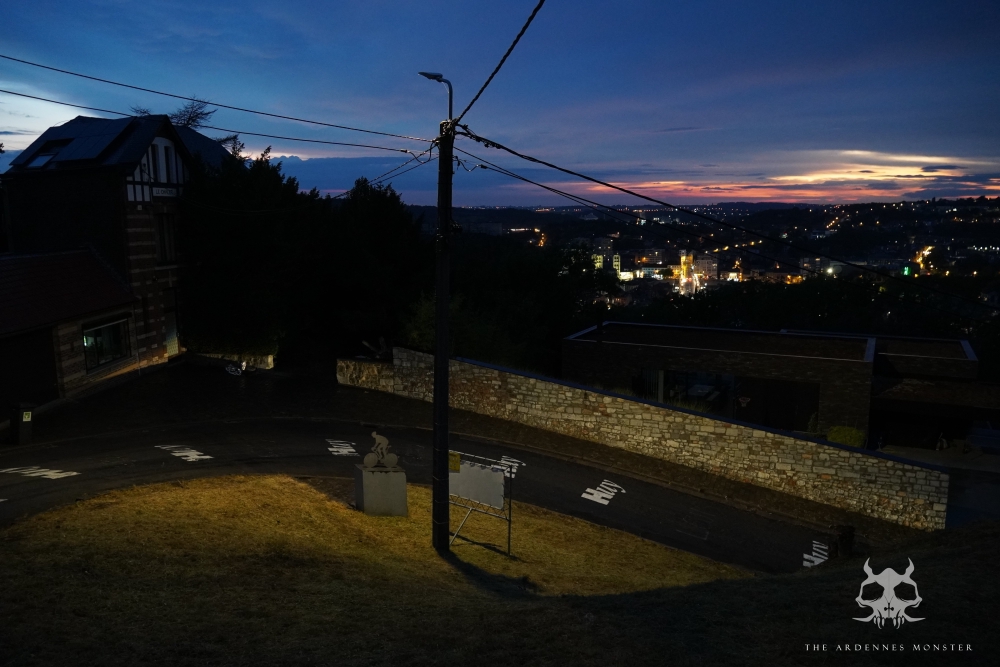
Mur de Huy
The next four hours were a bit of a slog. Riding the fast flats in the Netherlands doesn’t really prepare you to drag yourself at 20km/h. On the bright side, the pain wasn’t getting any worse, and the rain eventually stopped. I had Côte de la Redoute to look forward to, as that’s a climb I’ve done before, and the fastest time up the climb was to be rewarded with their weight in beer. Not that I had any hopes of being the best time, at the state I was in, but I was still curious to how my time would stack up against my previous attempt.
I wasn’t prepared to what the organizers had cooked up though. The whole climb was lit up by candles on the side of the road. Music was playing. Olivier was running besides the riders, yelling encouragement and filming. A brutal climb, wet clothes, knee pain, and yet that managed to get the biggest smile out of me. What it didn’t manage was to squeeze a few extra watts out of the legs, and I finished the climb in 11:04 (14th place overall).
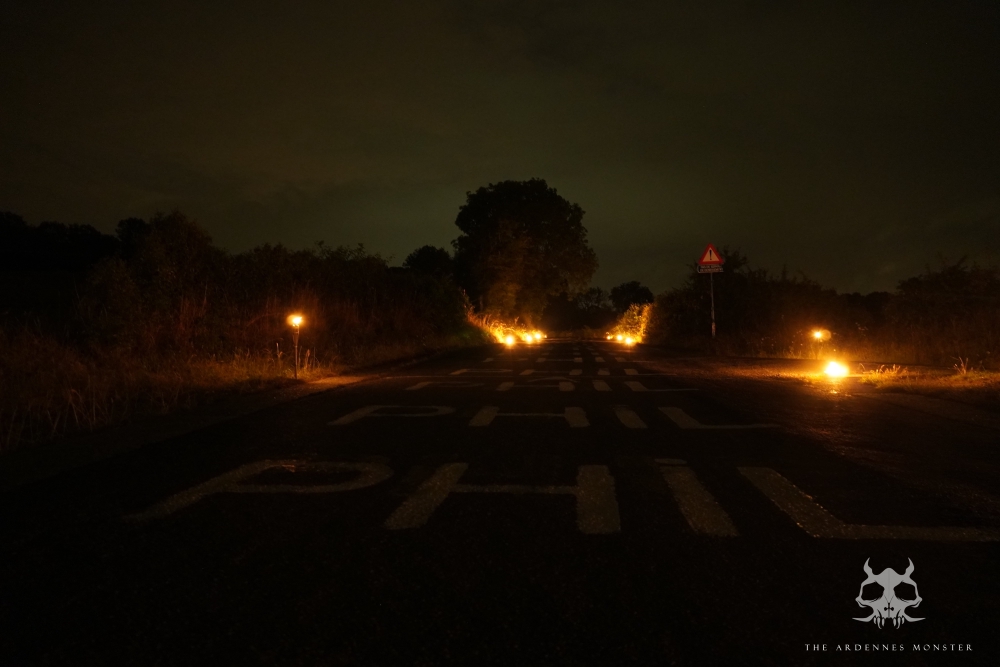
Côte de la Redoute lit up by candles on the roadside
From then on things started to improve slightly. The wet gear dried up, and the knee pain somehow started to fade to the point it never returned. I forgot that I wanted to scratch, and the kilometers just ticked by. Passing a couple of riders that had stopped to rest helped to lift the spirits even higher.
Morning came around, and while going up Mont Rigi the weather started to turn again. First the fog, then a drizzle, and then after the descent the heavens opened. For about half an hour I was cycling in pouring rain. I saw at least one rider stopped under a tree, and I questioned whether riding through this was actually safe. The brakes were protesting loudly, but doing their thing, and I was expecting to arrive at CP1 soon, so ride on I did.

Last descent just before Le Coffee Ride
I arrived at Le Coffee Ride just before 11AM, surprisingly in 10th place. The other riders I passed must’ve been off the road, as I don’t remember overtaking anyone. The strategy of trying to keep moving at all costs seemed to be paying off. Had the can of cola I had been dreaming of for the last 6 hours, a cup of coffee and a slice of carrot cake. The saddle sores started to appear, so I got cleaned, lathered up with some more chamois cream, and back on the bike.
Le Coffee Ride to Panache: The Lucifer Section
Just as a warm up, we had the Thier de Coo basically at Le Coffee Ride’s doorstep. Just in case you didn’t have enough time to get the legs back in order, soon afterwards we had to tackle the Côte de Stockeu shortly afterwards, and then Côte des Hézalles for good measure. That was a brutal way to get back on the race, it felt like repeatedly being punched in the face.
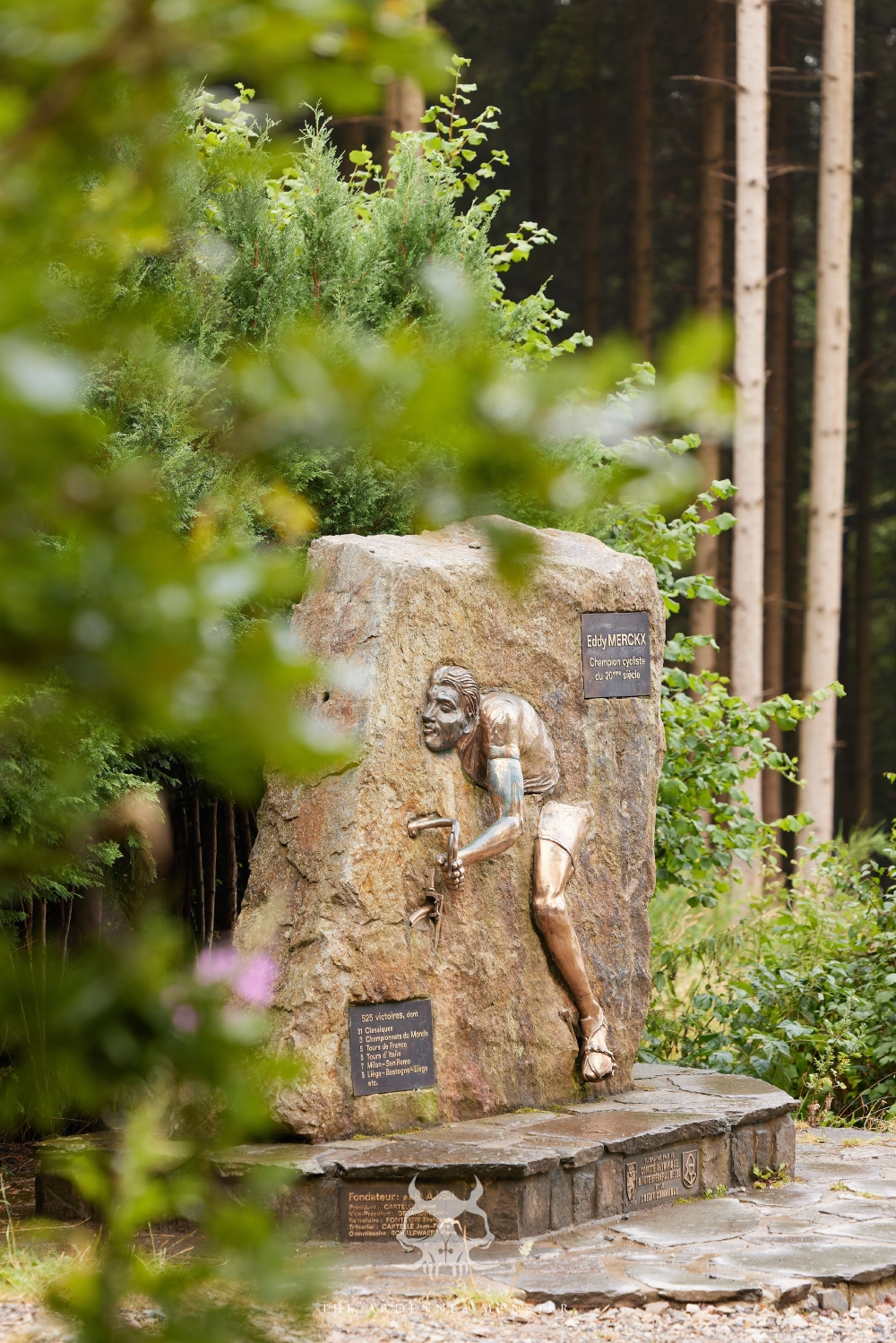
Eddie Merckx monument at the Côte de Stockeu
Even though the remaining climbs were nothing to sneeze at, the rest of the day’s biggest challenge was refueling. July 21st is Belgian National Day, and I was not able to find a single supermarket, convenience store, or gas station that was open. I had plenty of food with me, but towards the end of the day I started to run out of water. I found a vending machine at the train station in Vielsalm that only accepted coins. It did not accept my coins for whatever reason, so I cursed it twice for making me stop and waste time, and to give me false hopes. Hours later, in Bomal, I finally stopped at a snack bar, ordered what turned out to be the world’s most disgusting fries and a cola, and strapped in for another 10 hours until the next checkpoint, likely without any refueling stops.
The hours continued to tick by until La Roche-en-Ardenne and the Col de Haussire. ClimbFinder considers it to be the hardest climb in Belgium, and while I had already tackled steeper ones, this was a long, slow and difficult slog that took an hour to complete and sapped all the energy I had left for the day. Thas was also where I made the biggest strategic mistake of the race: CP2 was 50km away by following the route, but it was a loop that ended just across the bridge in La Roche-en-Ardenne, and apparently it was allowed to make use of it without having done the loop. Had I known, I’d have slept, refueled and recharged my gear, and easily ridden through the rest of the night.
Since I didn’t know any of that, darkness caught up to me soon enough, and so did the sleep deprivation. It became harder and harder to keep the focus on the road, and I started having the wildest conversations in my head, as if my mind had been split in two. I tried my best to keep awake until I could find some shelter to take a nap, and it felt like hours until I finally found a bus stop. CP2 was just an hour away, and I didn’t want to waste time, so I laid down for just 15 minutes and carried on.
After the nap I felt good for 15 minutes, but I started to lose focus again. It wasn’t as bad as before, so I figured I should be safe until CP2. I was eventually surprised by the Mur de Maboge, had nothing left in the legs, and decided to walk. That woke me up a little again, and I was able to limp my way to Panache back in La Roche-en-Ardenne. I was again surprised to learn that I managed to arrive there in 7th place.
Panache to Wancennes: The Elmpt’s Deep
I slept for three hours, prepared my gear, and read my bike computer say it couldn’t resume my ride. Except all of my data was still there, which made me really confused, but I assumed everything was working and continued as normal. What I didn’t know and would only discover at the very end of the race was that it stopped recording anything after that point, so I have no data from the second half of the race.
This was the shortest and flattest section of the race, so after about an hour of slightly moody weather I actually started to have a lot of fun. Being fresh after some sleep put some power back in the legs, average speed started to tick up, and for the first time I actually believed I would finish the race.

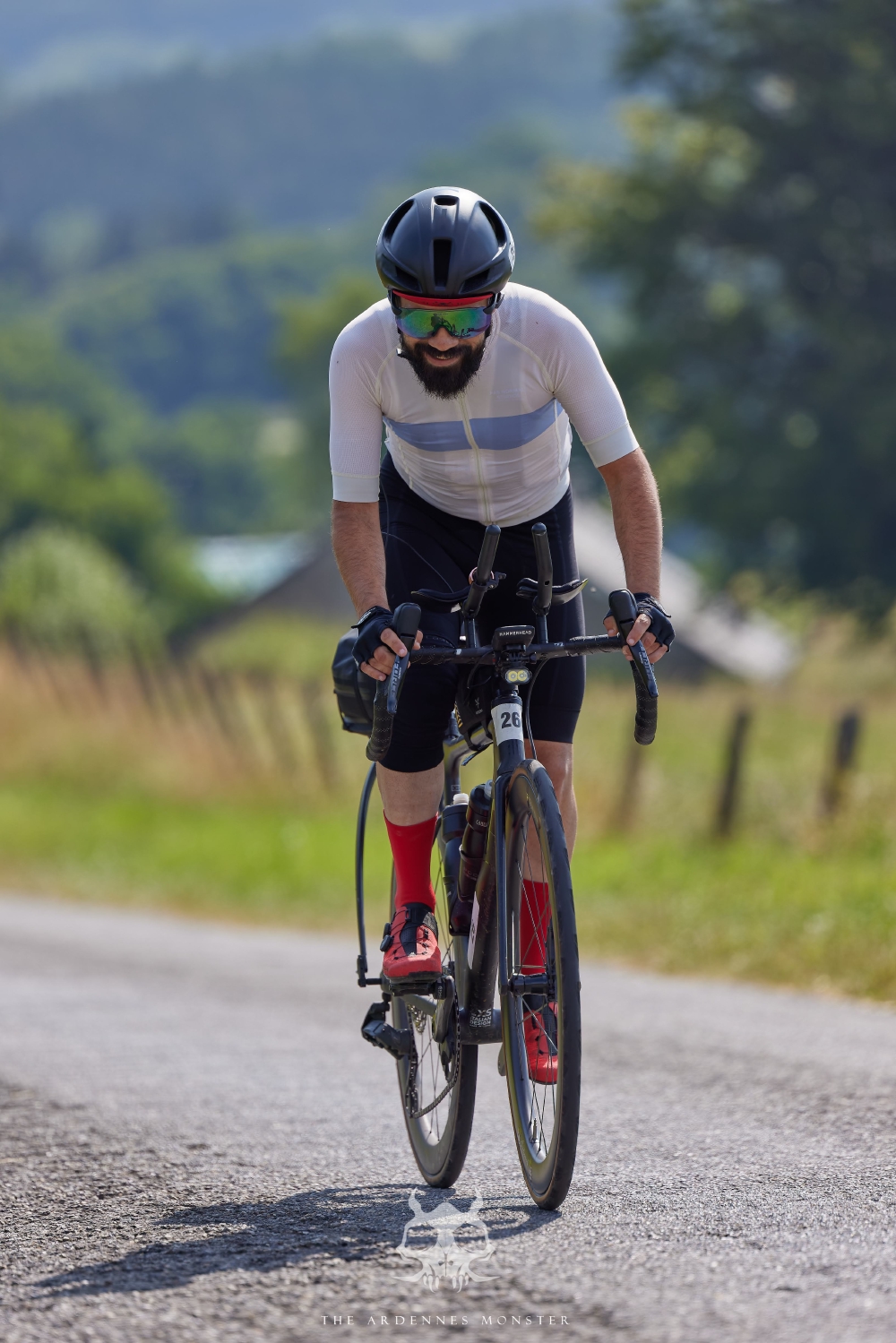
Feeling good and having fun!
I ran without even a hint of problems until about the last hour before CP3, when the saddle sores really started to hurt. I had very similar sores during the Race around the Netherlands, and it’s disappointing that I haven’t been able to fix the issue. It was a very painful hour, climaxing with one last big climb right before the checkpoint, in what had been the worst asphalt I had seen so far, but at least I managed to keep 7th place this far.
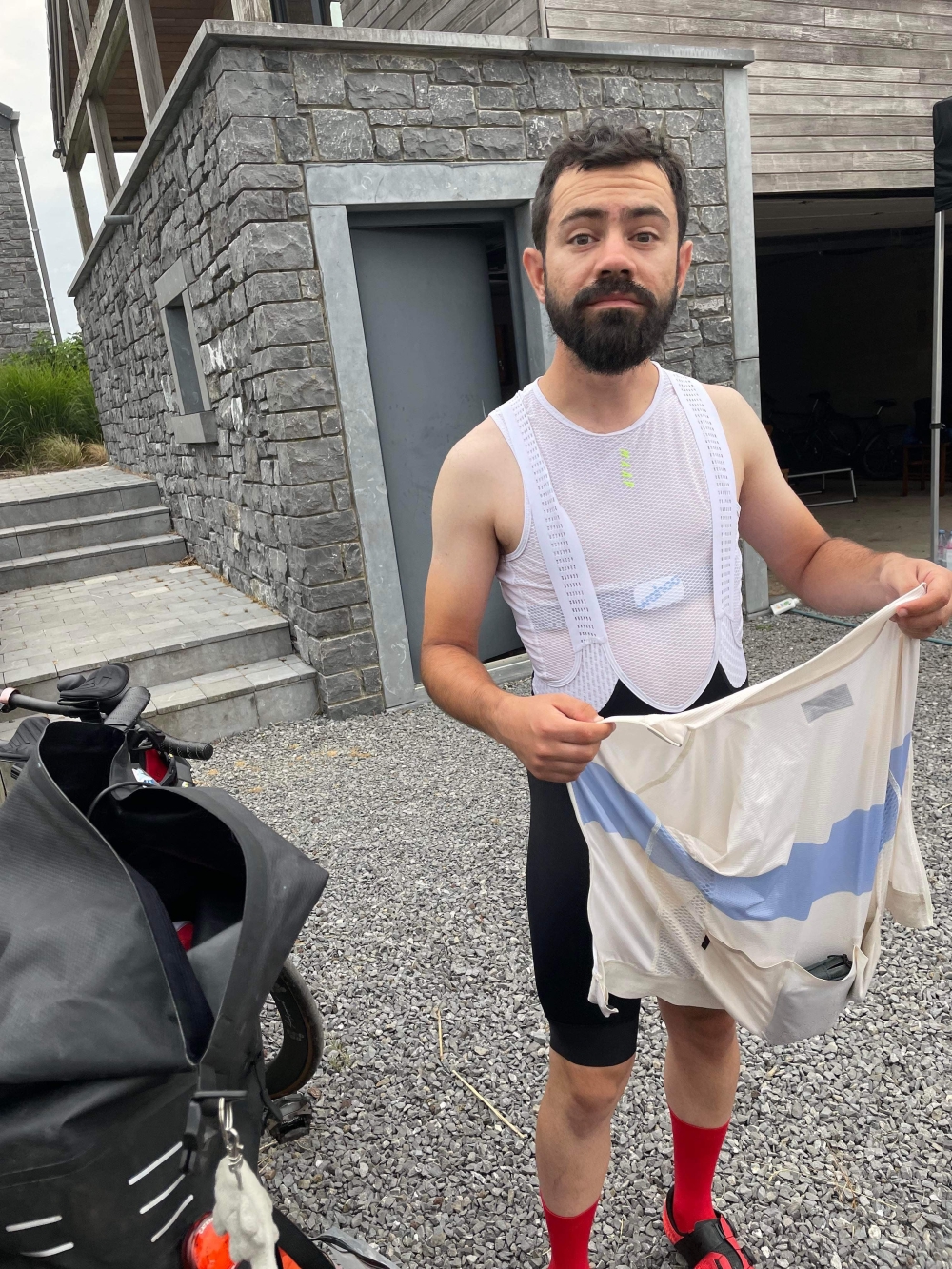
Completely battered at CP3
The plan was to sleep 3 hours. The forecast said that’s exactly when it should rain, and everybody at the checkpoint decided to take a longer rest because of it. Even though I considered taking on the rain for a small advantage, I simply overslept. Being tired is a funny thing: when the alarm I had set rang, I forgot I was racing and just went back to sleep. When I finally came back to my senses and remembered what I was supposed to be doing, 5 hours had passed.
Wancennes to Citadelle de Namur: The Mosan Cauldron
I suppose that this section is where the Ardennes Monster really lives. The last section was home to the steepest climbs of the race, all clustered in the last 120km. I was fully prepared to have to walk anything above 20% gradient, and with at least five climbs in that category, there was going to be a lot of walking.
From 11PM when I left CP3 until sunrise, it was pitch black, and I remember little of it. Lots of roads without any lights at all, but fortunately my front light was bright enough so everything went fine. The biggest challenge was managing the sores, really, and I took advantage of the descents to stand up from the saddle and give my backside some rest.
The morning came, and I was surprised by the sleep deprivation kicking in again. I had just slept 5 hours the night before, and while it wasn’t the greatest quality sleep, surely I should’ve been able to finish the race without another stop? I decided for another 15 minutes nap in another bus stop at the edge of some town, making sure to leave before the first bus was supposed to arrive. This time the nap worked, and I had an enjoyable time following the Meuse to Anseremme, where I stopped at a supermarket for the final resupply stop. From here on out, the climbs are really gonna hurt.
And hurt they did. Just after arriving in Dinant, Montagne de la Croix, the steepest climb in the race, with a claimed 25% max gradient. I did the best I could to get halfway, but it was clear I came in too fast, so that was the first dismount of the day. 40km later, another wall, La Gayolle, where I decided to really try and ride all of it. It is such a shame that my bike computer ate half of my ride, because I’m sure this would’ve been my best power over the duration of this climb. I managed to do it, but also pulled a muscle in my calf, which made the remaining climbs that much tougher.
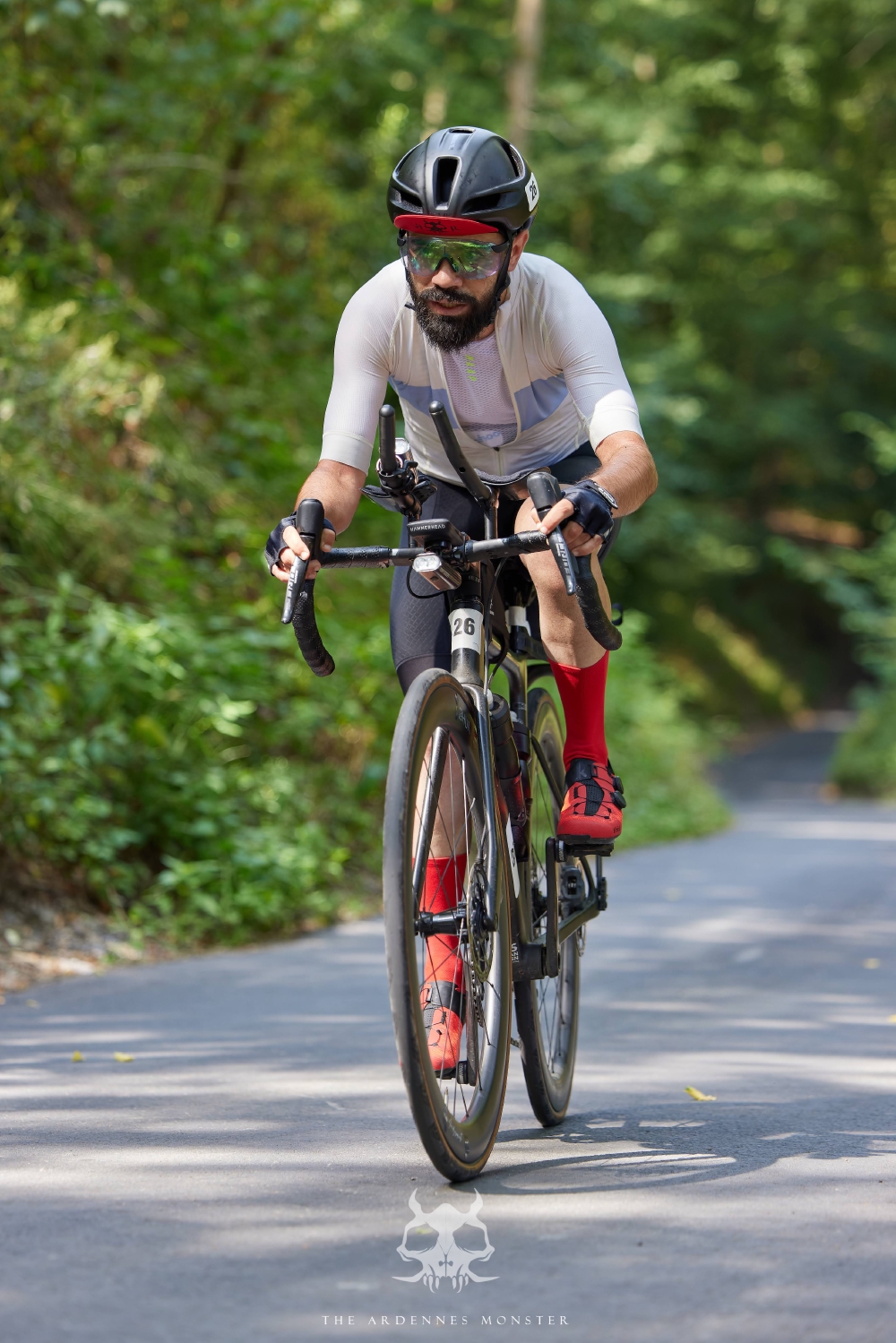
Putting out all of the watts at La Gayolle
Despite my best efforts, I had to walk several more climbs. The heat was unbearable, especially while walking, and at this point every single piece of clothing was bothering me. My glasses were rubbing salt on my forehead, the helmet strap was cutting against my neck, and my shorts somehow managed to rub the backs of my knees completely raw. After descending Le Stampiat (which I obviously had to walk up, with another 25% max gradient) I decided that enough was enough, and stopped for a longer break at a gas station.
The stop gave me the motivation I needed to get the last stretch done. There were a couple more challenging climbs, and while I couldn’t really say “it’s all downhill from here”, the end at the Citadelle de Namur was in sight.
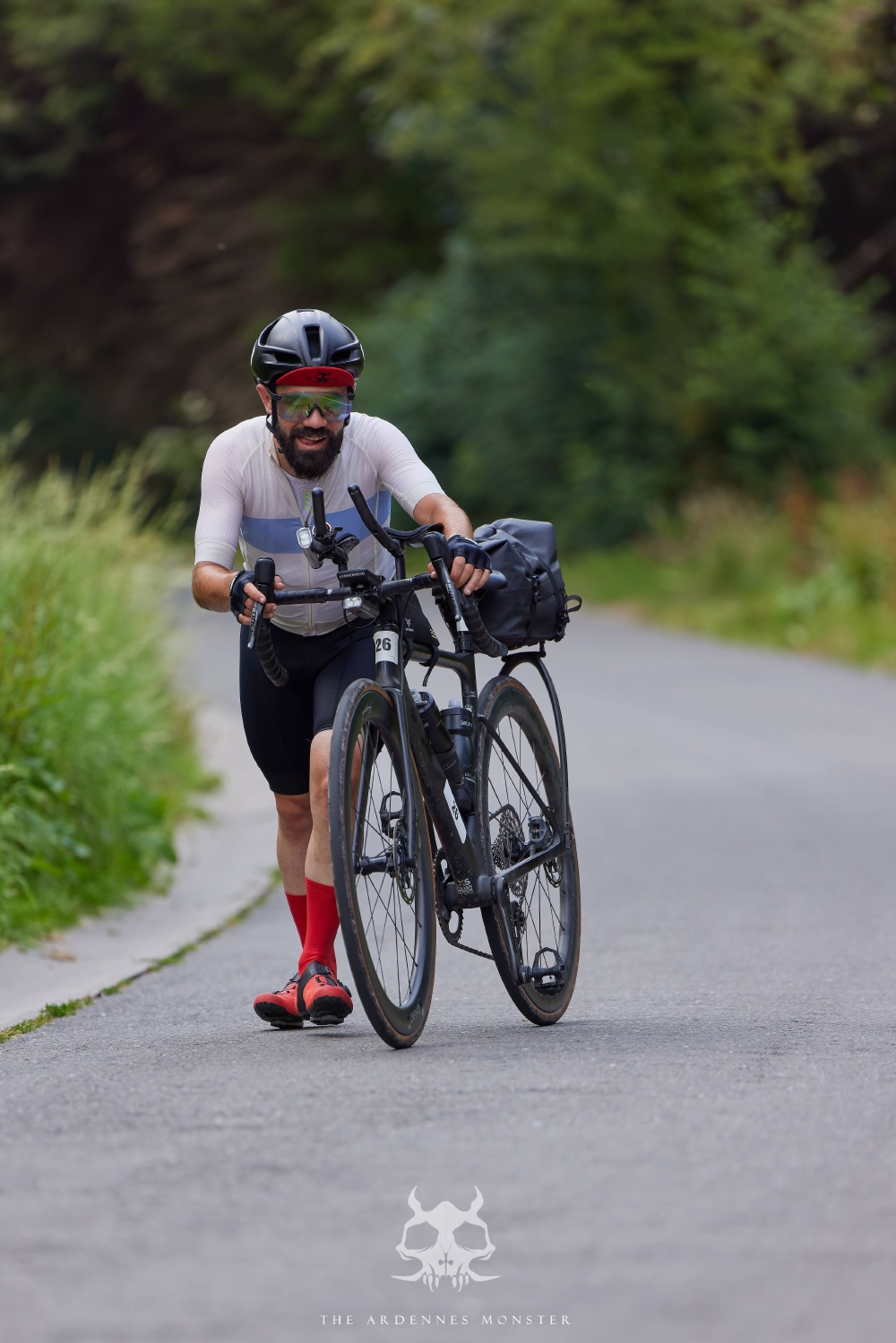
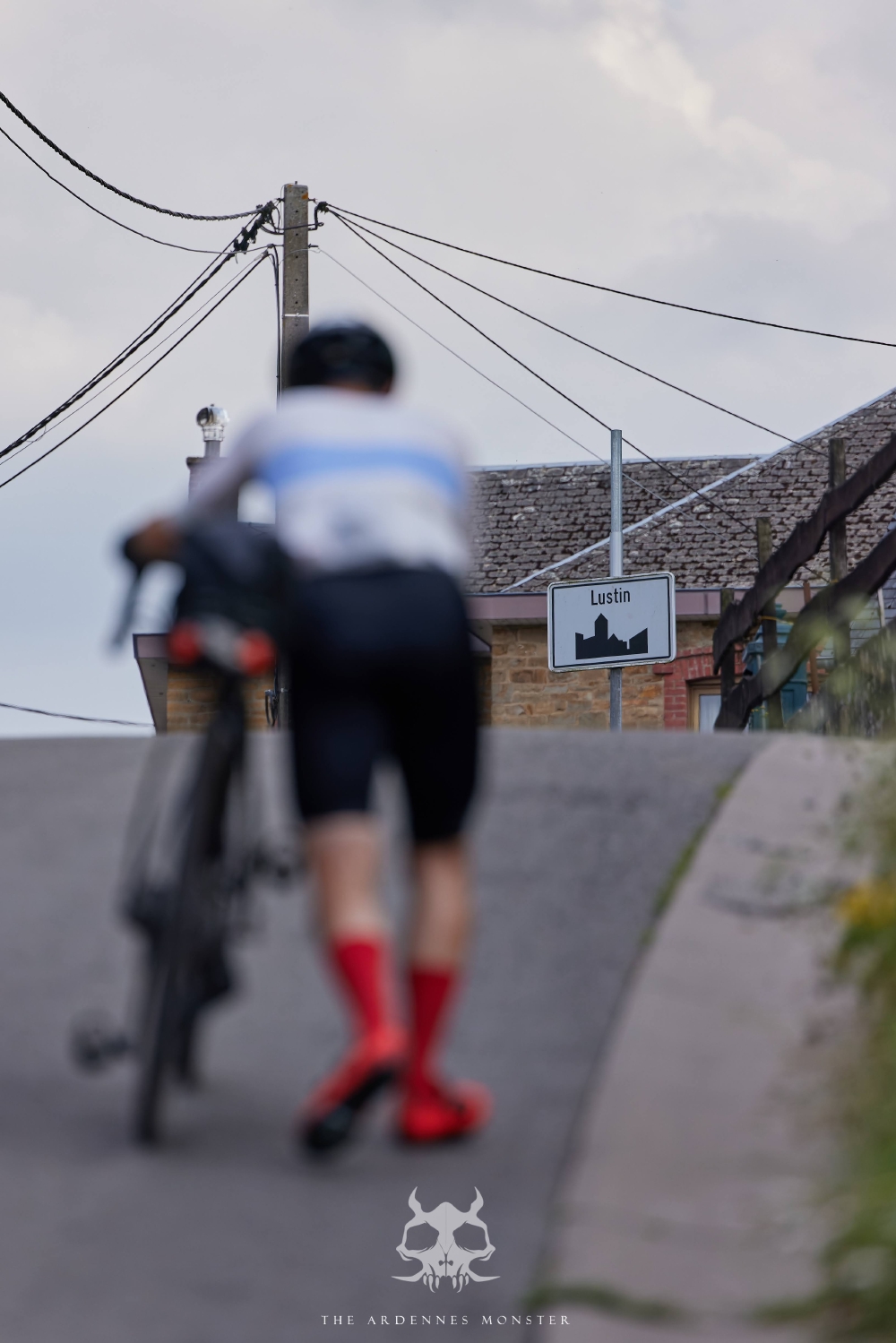
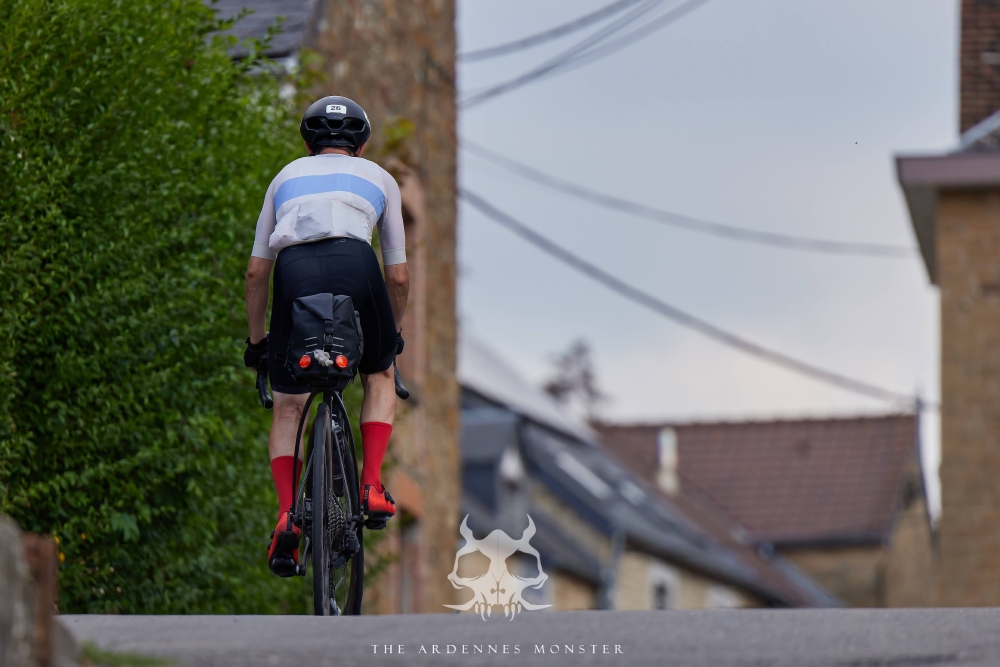
The Triple Mur de Monty, true to its name. The last of the three inclines completely broke me
The last hour was relatively fast, with a lot of flats or gentle descents, and good asphalt that allowed me to get down on the aero bars and squeeze whatever was left on the legs. I met Olivier taking pictures and cheering me on several times during the last few kilometers, and it’s weird how much that helps with just getting the distance done. Everyone does say that ultra racing is mostly mental.
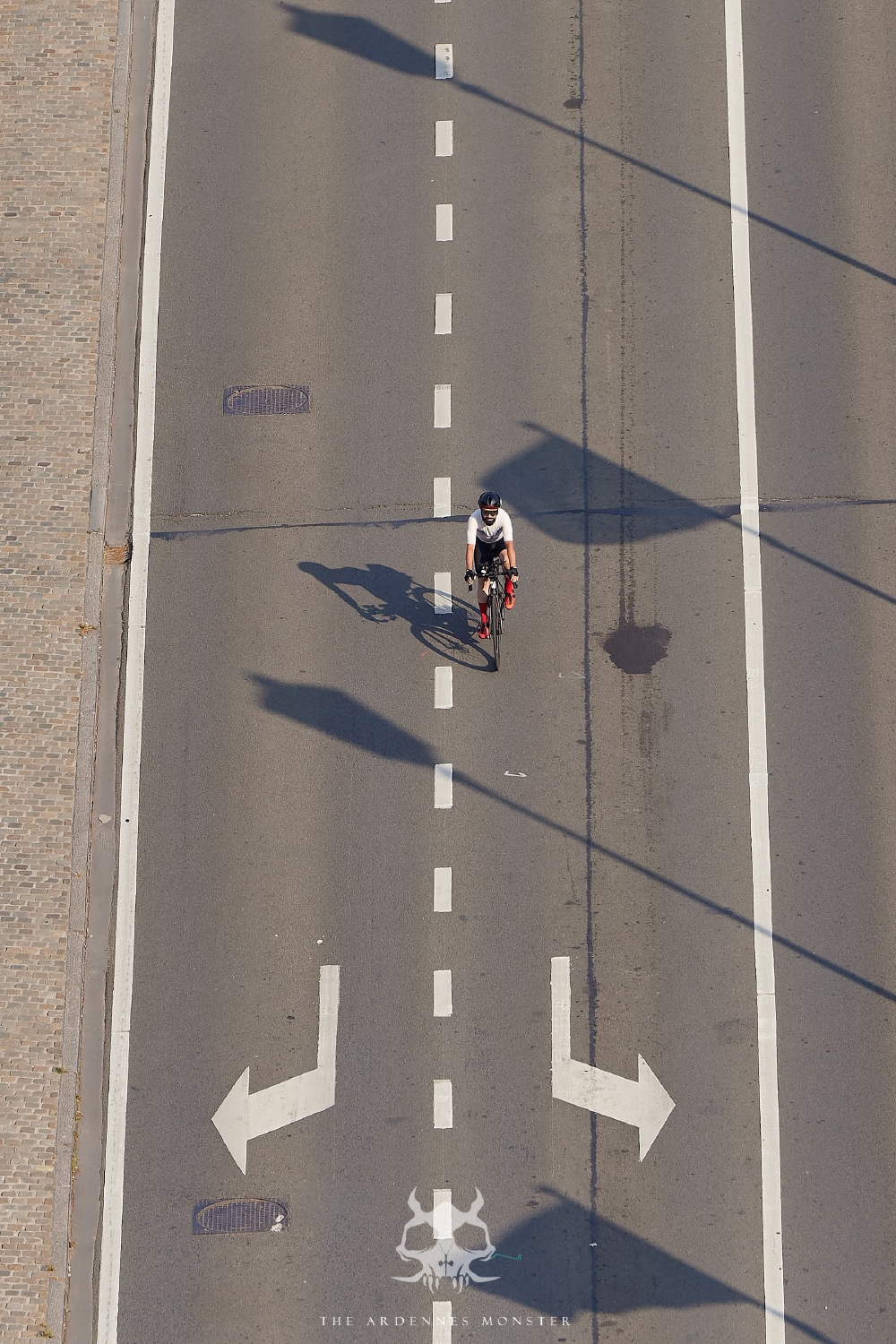
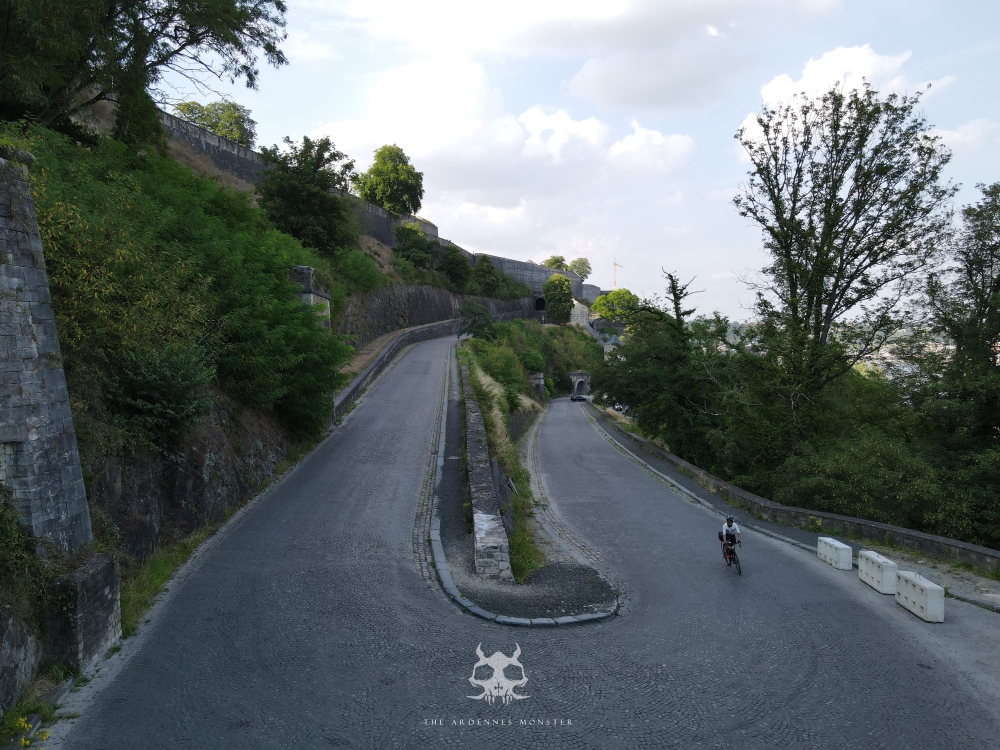
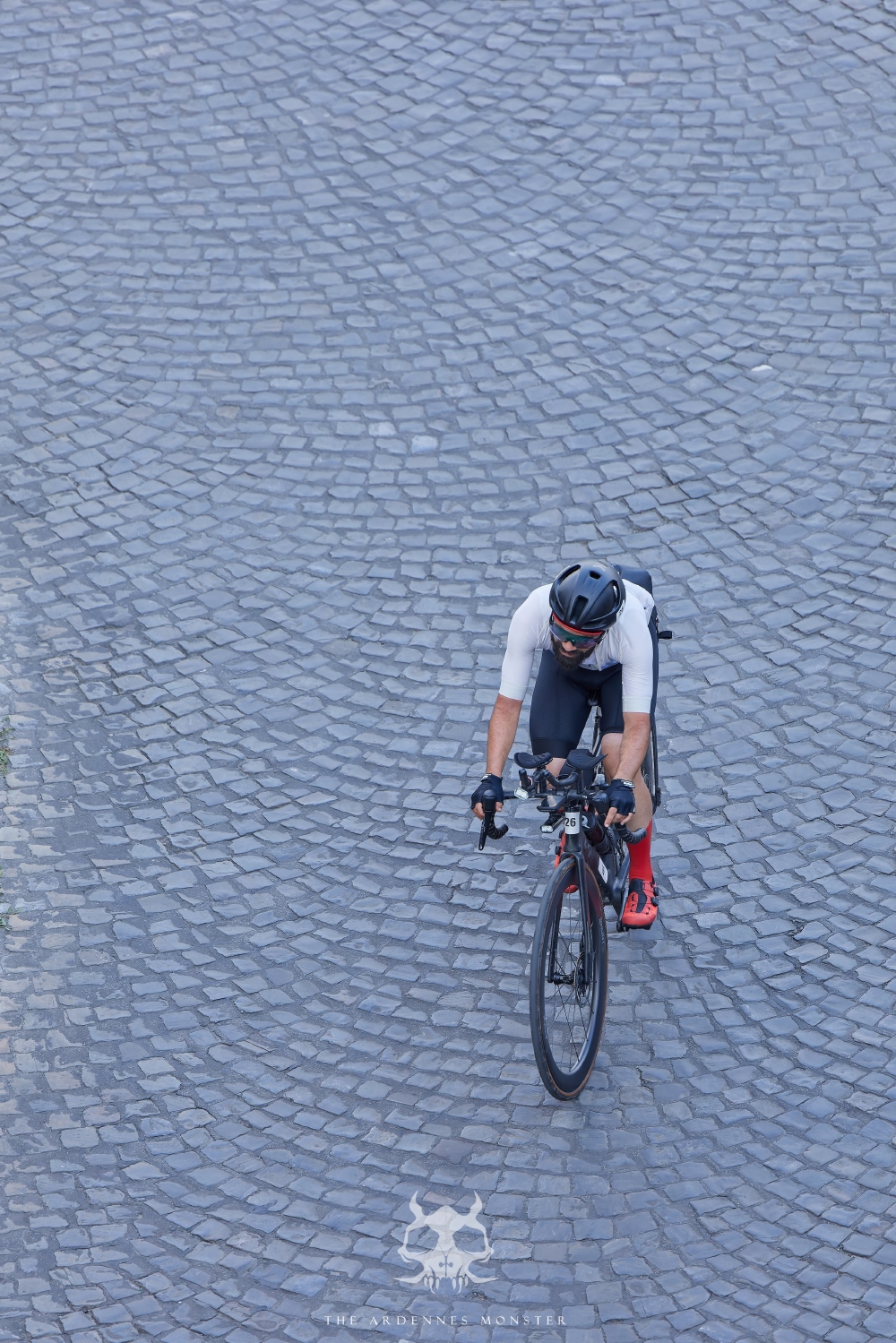
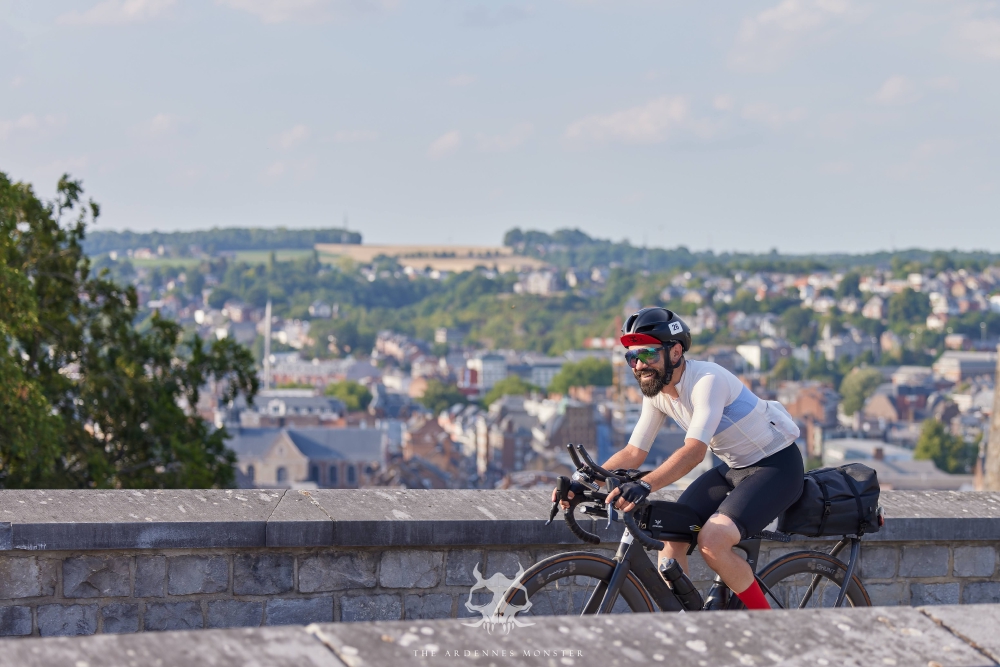
And then, Namur. The city was busy, so my way to the Citadelle was filled with traffic and stops at traffic lights. The final climb was as emotional as one would expect. 60 hours ago I didn’t even believe I was gonna go any further than CP1, but now I’m rolling up to the finish. The cobbled climb wasn’t kind on my hurting wrists and the saddle sores, but it does mean that the suffering is just about to end.

70 hours and 58 minutes. 7th place
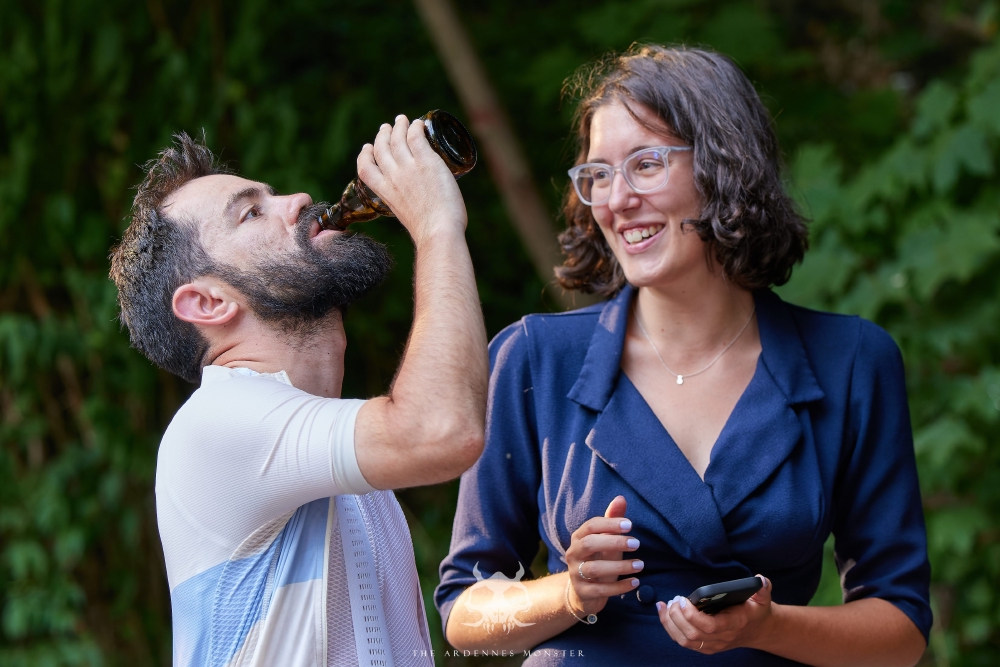
A well deserved beer after a well raced event!
Lessons Learned
This was a very different race from the Race around the Netherlands: I didn’t do anything particularly dumb this time. I dare say that I raced as close to the theoretical best I could have, in the shape I was in.
One thing I am really proud of is that my stops were few and very efficient. I passed very few people while they were riding, and I’m sure several riders that finished after me are stronger riders. Keeping the move ratio high works. Unfortunately the stops at the checkpoints weren’t up to the same standard, and I could’ve saved a lot of time that would’ve gotten me closer to 6th place. Especially the waking up, getting moving again was much harder than I expected.
The biggest let down was the gear ratio. 1:1 was too hard for me. I have a 42T chainring that would’ve eased a lot of the suffering in the 20% climbs, but I didn’t think I’d need it. If I had been able to attempt the Conquete des Ardennes prior to the race as I had planned, this wouldn’t have happened. Route recon is important!
I also have to confront the truth: the power just isn’t there. Even if I had executed everything else to perfection, I wouldn’t have caught 6th place. I neglected HIIT this year, and it showed here. I’ll try to be more disciplined in my training plan, and hopefully lose a few kilos on the way as well.
Everything else was minor details. I brought too much food, too little water. Two power banks was probably extra weight I didn’t need, since I could recharge easily at the checkpoints. It all counts as experience.
Final Thoughts
This was indeed a brutal race, no doubt about it. At the end I joked that one could take just the final section, call it “The Monster” and none would be the wiser. But at a relatively short 1.000km, I can totally see myself doing it again, hopefully in better shape. The organization was outstanding, especially for a first edition race, and really entices me to try the other Resist and Ride challenges.
My calendar for 2023 is already more or less defined, but maybe I’ll have another encounter with The Monster in 2024. See you there?
